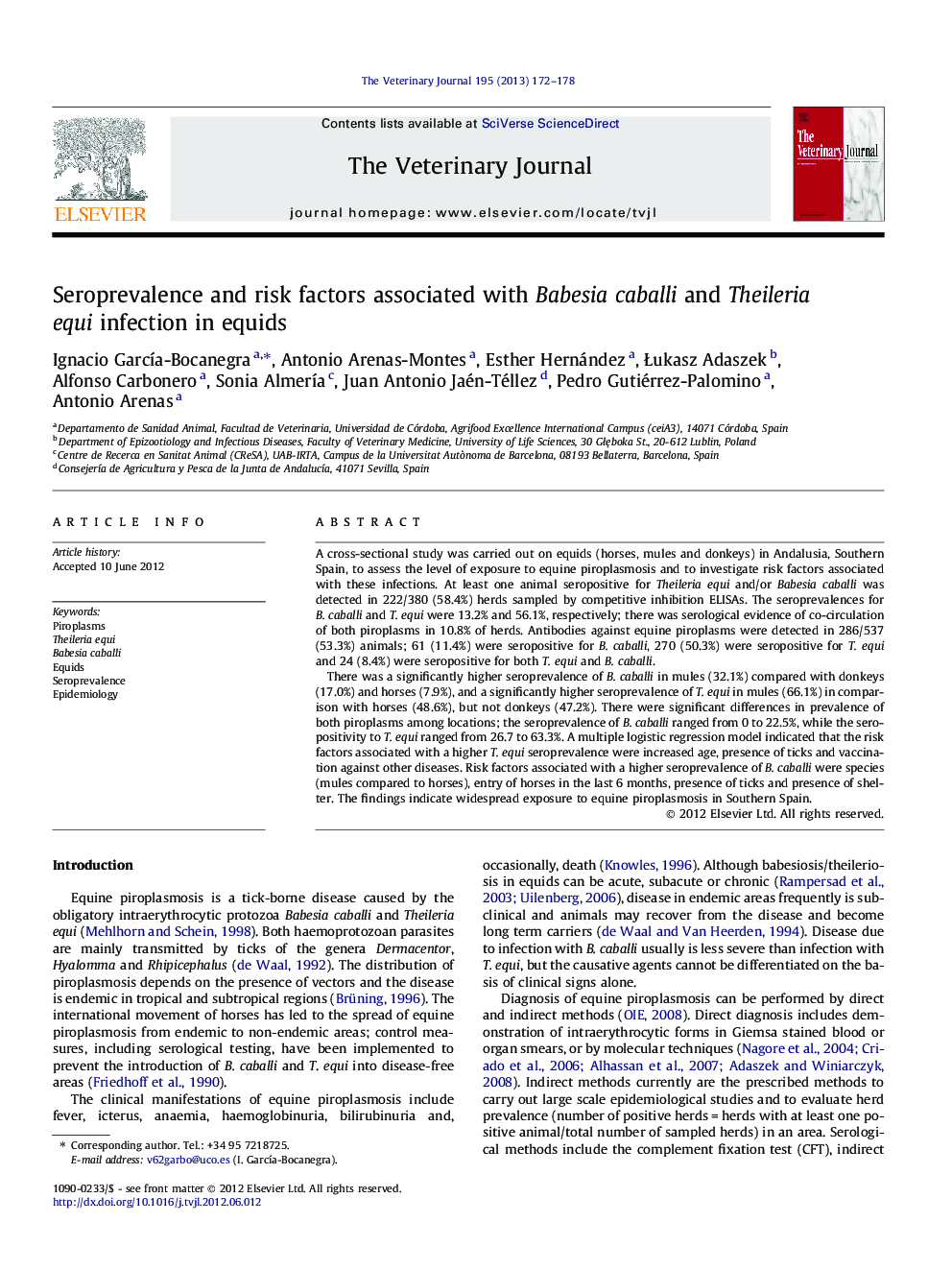| کد مقاله | کد نشریه | سال انتشار | مقاله انگلیسی | نسخه تمام متن |
|---|---|---|---|---|
| 2464258 | 1111786 | 2013 | 7 صفحه PDF | دانلود رایگان |

A cross-sectional study was carried out on equids (horses, mules and donkeys) in Andalusia, Southern Spain, to assess the level of exposure to equine piroplasmosis and to investigate risk factors associated with these infections. At least one animal seropositive for Theileria equi and/or Babesia caballi was detected in 222/380 (58.4%) herds sampled by competitive inhibition ELISAs. The seroprevalences for B. caballi and T. equi were 13.2% and 56.1%, respectively; there was serological evidence of co-circulation of both piroplasms in 10.8% of herds. Antibodies against equine piroplasms were detected in 286/537 (53.3%) animals; 61 (11.4%) were seropositive for B. caballi, 270 (50.3%) were seropositive for T. equi and 24 (8.4%) were seropositive for both T. equi and B. caballi.There was a significantly higher seroprevalence of B. caballi in mules (32.1%) compared with donkeys (17.0%) and horses (7.9%), and a significantly higher seroprevalence of T. equi in mules (66.1%) in comparison with horses (48.6%), but not donkeys (47.2%). There were significant differences in prevalence of both piroplasms among locations; the seroprevalence of B. caballi ranged from 0 to 22.5%, while the seropositivity to T. equi ranged from 26.7 to 63.3%. A multiple logistic regression model indicated that the risk factors associated with a higher T. equi seroprevalence were increased age, presence of ticks and vaccination against other diseases. Risk factors associated with a higher seroprevalence of B. caballi were species (mules compared to horses), entry of horses in the last 6 months, presence of ticks and presence of shelter. The findings indicate widespread exposure to equine piroplasmosis in Southern Spain.
Journal: The Veterinary Journal - Volume 195, Issue 2, February 2013, Pages 172–178